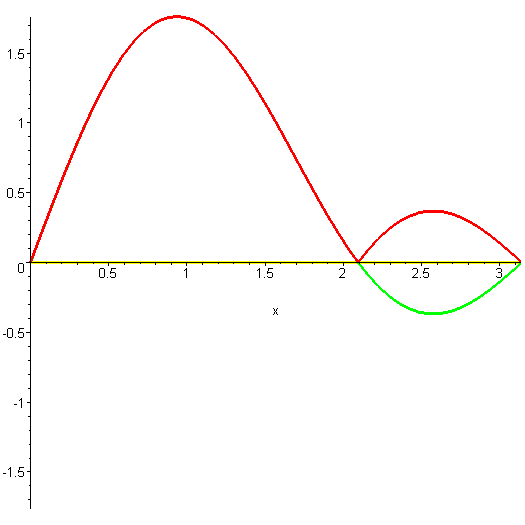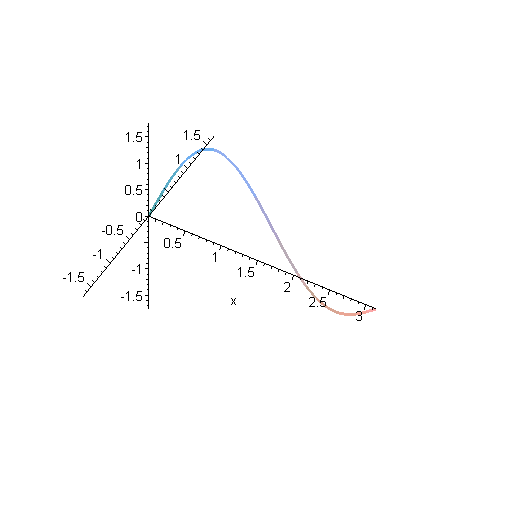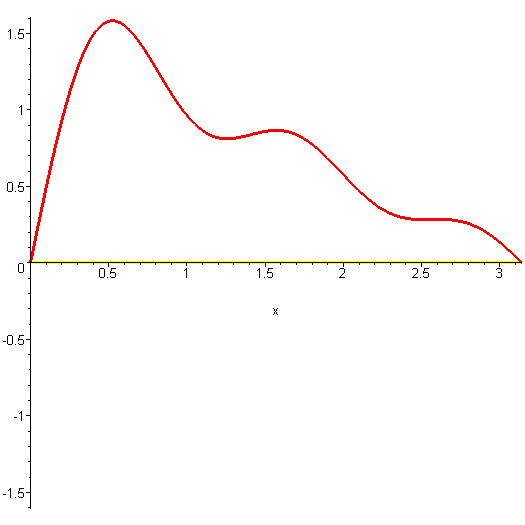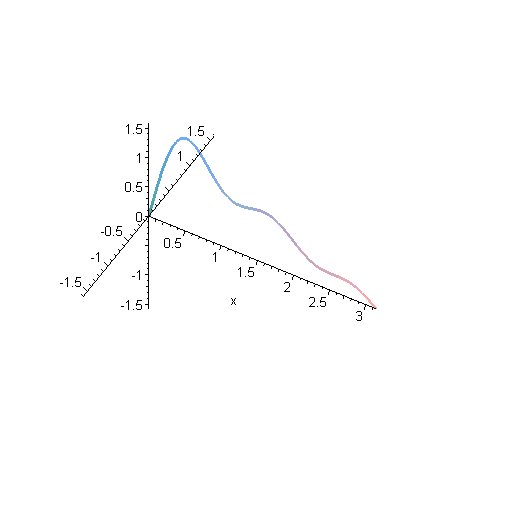
If we add together the solutions for those first two stationary states, we get this:


Note that this is no longer a stationary state: the absolute value of the wavefunction changes in time. That means that the most likely position of the particle also changes in time.
Here's another superposition of stationary states. To get this one, I added together the first five stationary states, giving more weight to the low-energy solutions than the high ones. (To be precise, what's shown here is Wave 1 + Wave 2 / 2 + Wave 3 / 3 + Wave 4 / 4 + Wave 5 / 5.)

